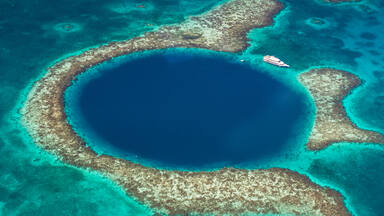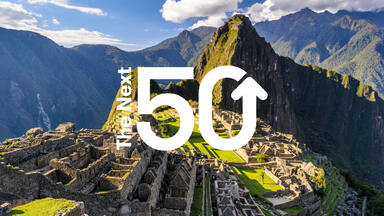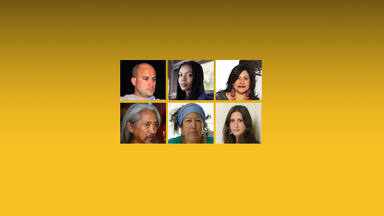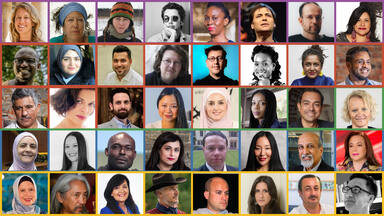Ibrahim Mahama
Visual artist and author
Azra Akšamija
Artist, architectural historian, Director of the MIT Future Heritage Lab, Associate Professor in the Department of Architecture
Vision for the Next 50
In the Next 50… Cultural institutions are built in to enable people in the global south to interact with each other and preserve their own heritage. They serve as places where people create and preserve art inherited from the past that will pass down to future generations.
In the Next 50… Heritage and art play a pivotal role in giving back a sense of identity and dignity to people who suffered from displacement and violence. Heritage sheds light on marginalized histories and gives those displaced people their voices.
Summary
Ibrahim Mahama and Azra Akšamija discussed the role of culture and heritage to highlight narratives of the under-represented regions. Both address questions of the ethics of preservation and how we deal with multilinear histories of people who have undergone harrowing experiences.
Ibrahim produces large installations to consolidate connection with traditions, heritage, everyday sites and people in Africa. He emphasized the importance of creating a space where artists from the global south can gather and create cultural legacies for the future. Azra shared her passion for building artworks that can give refugees healing, dignity and resilience, ultimately empowering them. Both as individuals and as a part of a global alliance, actors in the heritage sector must reconsider, she said, how to make those displaced people benefit from heritage preservation.
Dialogue
Watch the dialogue
Explore other sessions
Five dialogue sessions covering five themes take place in 2022, each joined by thinkers in paired dialogue from diverse regions. The interdisciplinary dialogues inspire new visions for the next 50 years of World Heritage.



